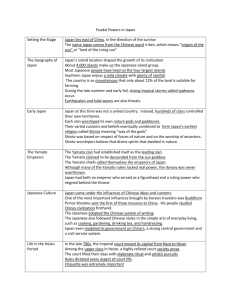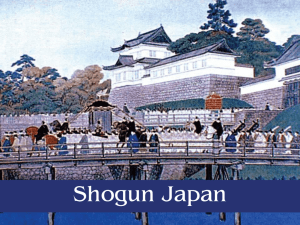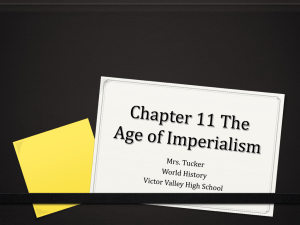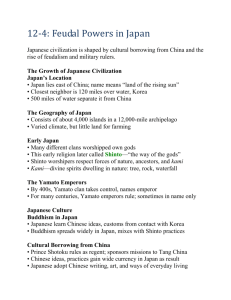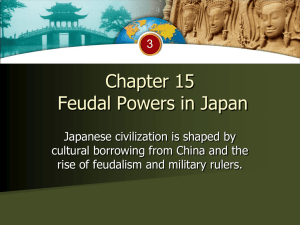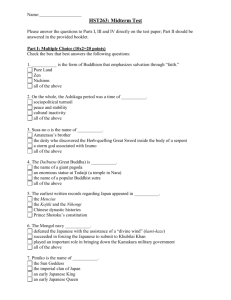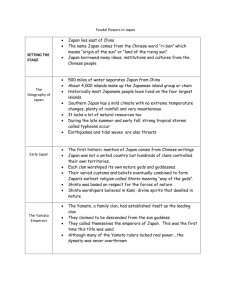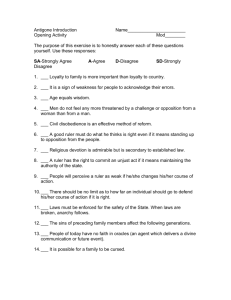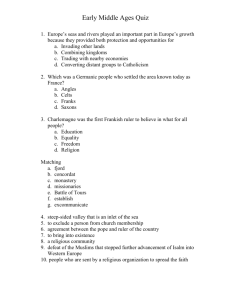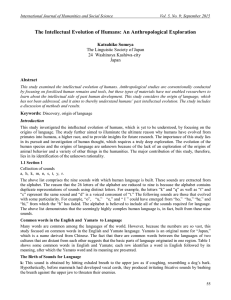File
advertisement
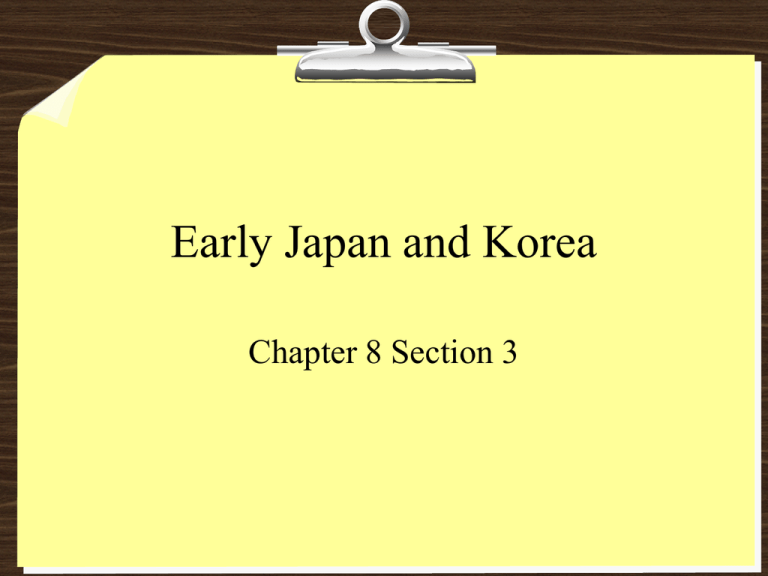
Early Japan and Korea Chapter 8 Section 3 Geography of Japan • Japan is a chain of many islands – four major islands Hokkaido, Honshu, Kyushu, Shikoku • Mountainous, many are volcanic • Fertile soil • Prone to earthquakes • Geographically isolated The Rise of the Japanese State • Ancestors of present day Japanese settled in the Yamato Plain 1st centuries • Society made up of clans – small aristocratic class and large population of farmers, artisans, and servants • One ruler of the Yamato clan rise above the rest to become the supreme ruler – others continue to compete for power Chinese Influences • Shotoku Taishi – Yamato prince wants to unify the clans of Japan to be more effective against a Chinese invasion • Sent representatives to Chinese capital to learn government system • Japan roughly models China’s centralized government and has a supreme ruler • • • • Taishi asserts power as the supreme ruler Objective? Limit the power of aristocrats, increase power of Yamato ruler Portrayed as a divine figure Chinese Influences • Continued to make changes based on China’s model • Japan was divided up into administrative districts governed by senior officials (local nobles) • New tax system that paid the central government directly, not local The Nara Period • • • • • Taishi dies 622 – power falls to Fujiwara clan Yamato ruler is still emperor – How? Strongly influenced by the Fujiwara clan 710 – new capital established – Nara New title for the emperor “son of Heaven” – What is the significance? • Reforms continue, but aristocrats are too powerful to overthrow • Reasons? The Heian Period • 794 – capital moves to Heian • Emperor still “rules” basically a figurehead, power still resides with the Fujiwara clan • Becoming more decentralized – local aristocrats take control again • Collect taxes and often controlled the farm lands The Heian Period • New military class emerges - samurai – (those who serve) • protect and secure property of their employers • Comparable to the knights of Medieval Europe • Similarities? The Kamakura Shogunate • Fighting among aristocratic families leads to constant civil war • Minamoto Yoritomo - powerful noble who defeats several rivals sets • Centralized government under military control – Shogunate • Shogun – (General) Powerful military leader • Emperor still a figurehead – power is with the shogun • Lasts from 1192 to 1333 The Kamakura Shogunate • Worked well at the start • Mongol invasion in 1281 • An army of 150,000 led by Kublai Khan • Most of his fleet was destroyed by a typhoon • Seriously strained the government • Next invasion of Japan? • 1333 – overthrown by the Ashikaga family Collapse of the Central Rule • Aristocratic power grows again • Daimyo (great names) – Head of noble families • Owned the landed estates and paid no taxes • Still rivalries • Protected by the samurai • Onin Civil War 1467-1477 destroys parts of Japan • Central government disappears – continually fighting lasts for years Life in Early Japan • Farming society – limited farmland with lots of rain for growing rice in the flooded fields • Noble families control most of the land • Manufacturing and markets appear during the Kamakura Shogunate • What begins appearing in larger cities? • What is being made? • What does all of this spawn? The Role of Women • • • • • Somewhat equal to men Had inheritance rights If abandoned, could divorce and remarry Did not have full legal and social rights Active in society – How? Religion in Early Japan • Kami • Worship of spirits that reside in trees, rivers, and mountains and spirits of the ancestors in the air • Evolves into Shinto – the sacred way – still practiced, not really spiritual • Becomes connected with the divinity of the emperor and the sacredness of Japan Religion in Early Japan • Zen • Buddhist monks come from China in the 6th century • Part of Buddhism, becomes the most popular among aristocrats – Why and with who specifically? • Different paths to enlightenment as compared to Chinese Buddhism – How is enlightenment achieved in China? Culture in Early Japan • Women wrote prose fiction • Were taught to read and write at home • Tale of the Genji • Written by Murasaki Shikibu around 1000 • Traces the life of a noble who tries to remain in the good graces of those in power • Shows the changes in his personality during his life • Art, architecture, and landscaping serve as a means of expression – Examples? The Emergence of Korea • Small and mountainous • Greatly influenced by China and Japan • Northern part occupied by China since 109 BCE – forced out by the Koreans in the 3rd century CE • Three separate regions emerge – Koguryo (N), Paekche (SW), Silla (SE) – bitter rivals until 600s • Silla gains control in 668 with the help of the Tang Dynasty (China) and the peninsula is governed by them until 935 CE The Emergence of Korea • Koryo Dynasty rises in the North • Rules from 936 to 1392 • Adopts many Chinese political institutions • Even under Mongol rule, they still maintain power by cooperating with the Mongols • Power struggles ensue after the collapse of the Mongol Empire • Yi (Joseon or Choson) Dynasty established in 1392 by General Yi Song-gye – lasts until 1897
